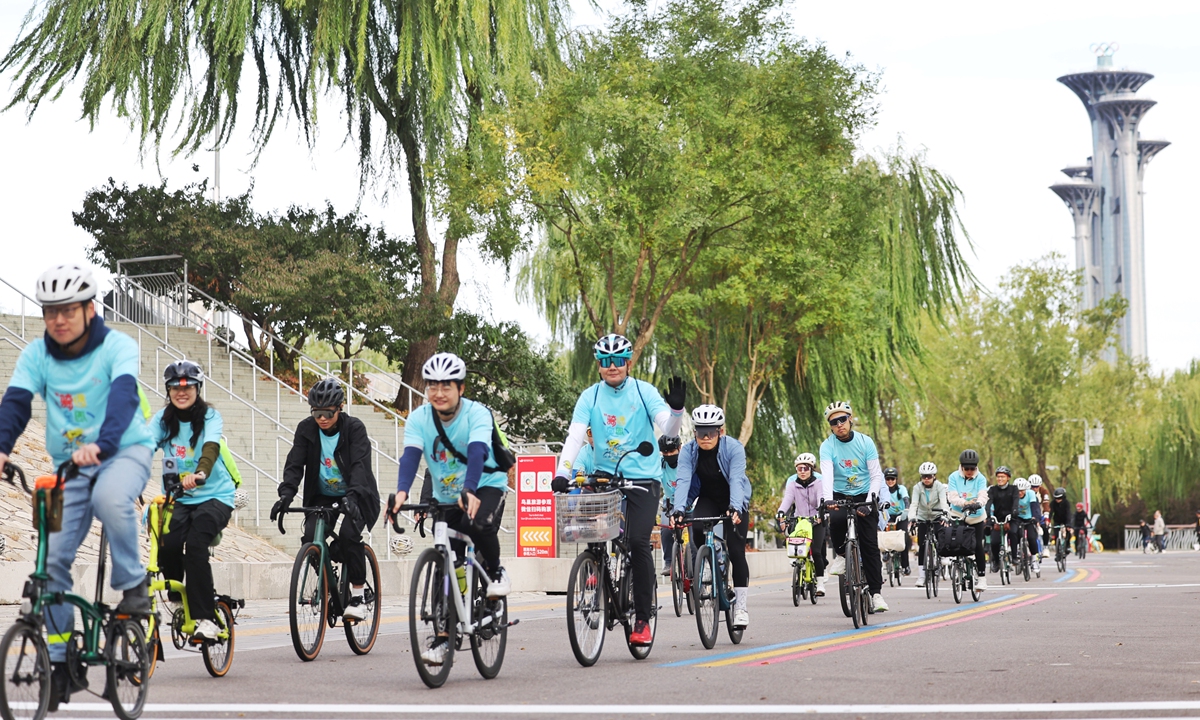Fitness
Olympic heritage fully open to the public, promotes mass fitness

Photo: Courtesy of the Olympic Center’s management committee
The Beijing Olympic Center recently removed its boundary fences and lifted the restrictions on the park’s closed management. This move signifies that the Olympic legacy is becoming a driving force for mass sports participation, breaking the physical barriers between the park and the city while providing citizens with more convenient fitness options.
“The current Olympic Park has eliminated opening and closing times, removed security checks for visitors, and lifted the ban on bicycles in the park. People can now stroll without having to detour to security checkpoints, cyclists can directly access the park from the street and can access landmarks like the Bird’s Nest and the Water Cube effortlessly while enjoying both recreation and exercise,” a staff member from the Chaoyang District Media Center in Beijing told the Global Times.
The Olympic Park has evolved into an all-time open central park for the capital city. It not only hosts various sports events, but also promotes sports culture and encourages citizens to actively participate in different athletic activities. By organizing events, providing facilities, and enhancing interactivity, urban public spaces have genuinely become vital venues for promoting mass fitness.
A representative from the Olympic Center’s management committee shared with the Global Times that this removal of barriers has made the beautiful scenery of the park more accessible. Meeting the diverse needs of citizens and achieving a harmonious coexistence between people and nature is the fundamental purpose of building “open parks.”
“By gradually advancing the seamless integration of the park with urban neighborhoods, the Olympic Park offering citizens more shared open spaces. This also facilitates the creation of a high-quality cycling routes, improving the safety, connectivity, and convenience of the cycling paths, thereby enhancing the fitness experience for citizens,” he noted.
This year’s Beijing government work report outlined plans to add 20 new “open parks” in 2024. Parks are no longer just about presenting exquisite landscapes; they emphasize integration with the city, serving citizens’ lives and sharing urban green sports spaces.
The transformation of the Olympic Park has encouraged citizens to engage in fitness activities, with the aim of enhancing overall health levels. The introduction and improvement of cycling routes offer citizens convenient options for exercise, attracting enthusiasts of all ages. While enjoying physical activity, people are also subtly deepening their sense of cultural identity with the city.
As the concept of mass fitness becomes deeply ingrained in people’s minds, Beijing is continuously promoting the harmonious coexistence of urban life and nature. This series of initiatives not only enriches the daily lives of citizens, but also provides a favorable environment for the widespread acceptance of sports culture. People are no longer limited to traditional fitness methods; they can now freely choose various sports activities that blend seamlessly with both natural and urban landscapes.
The author is a reporter with the Global Times. life@globaltimes.com.cn

/static.texastribune.org/media/files/f5fdb1dff4d6fd788cba66ebaefe08d0/Paxton_GOP_Convention_2018_BD_TT.jpg)






